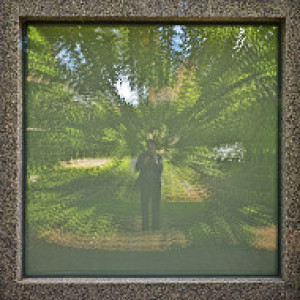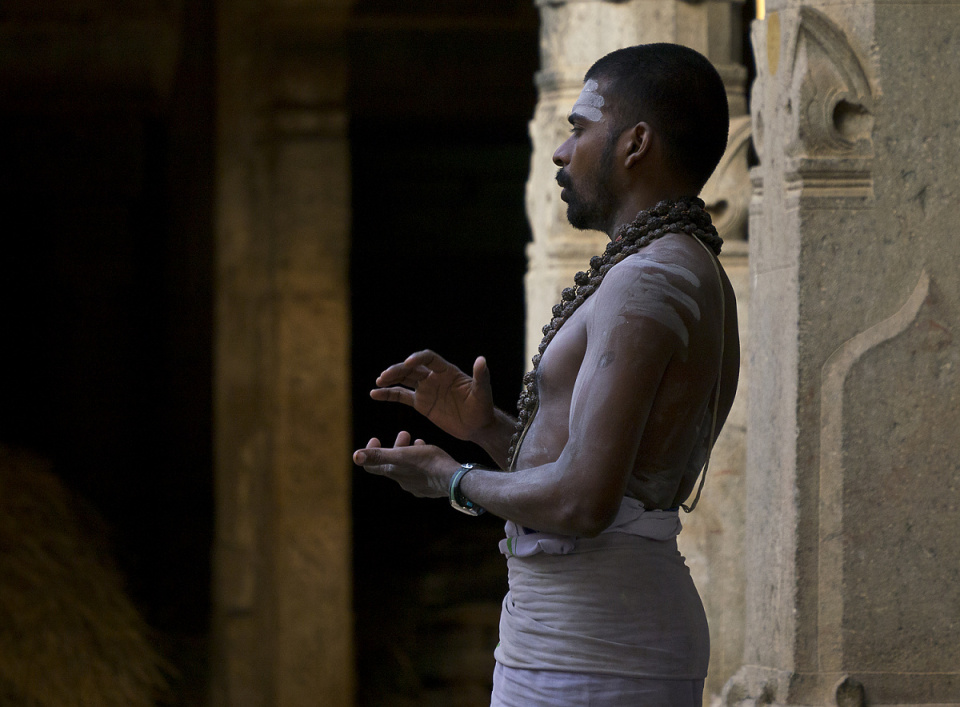Shiva Devotee absorbed
The Tevaram (Tamil: ??????? Teva means "God", aram means "garland"[1]) denotes the first seven volumes of the Tirumurai, the twelve-volume collection of Tamil Saivite devotional poetry. All seven volumes are dedicated to the works of the three most prominent Tamil poets of 7th century namely Nayanars - Campantar, Appar and Cuntarar.[2][3][4] The singing of Thevaram is continued as a hereditary practise in some of the Shiva temples in Tamil Nadu.[5] In the tenth Century AD, during the reign of Rajaraja Chola I, a collection of these songs was found abandoned in the Chidambaram temple, along with other religious literary works, and collated by Nambiyandar Nambi. It is during the Chola period that Tamil Saivism came of age and Tevaram with its body of texts on rituals, philosophy and theology, was canonized.[6] The 276 temples reverred by these verses are called paadal petra sthalam and another 276 places having Shiva temples that are casually mentioned in the verses are classified as vaipu sthalam. The conventional Sanksrit devotional texts were displaced in usage by Tevaram for Saivism and Nalayira Divya Prabandam for Vaishanvism. The tradition of singing Tevaram verses in temples by trained people called odhuvars is continued in some of the famous Shiva temples in Tamil Nadu is followed even in the current age. There are totally 796 of these songs with a total of more than 8,200 stanzas.[7] The three poets were not only involved in portraying their personal devotion to Shiva, but also involved a community of believers through their songs.[8] It is one of the important sources of Tamil Bhakthi, a movement that inspired the agricultural community.[9]
- 0
- 0
- Panasonic DMC-GH2
- f/5.5
- 150mm
- 1000


Comments
Sign in or get an account to comment.


